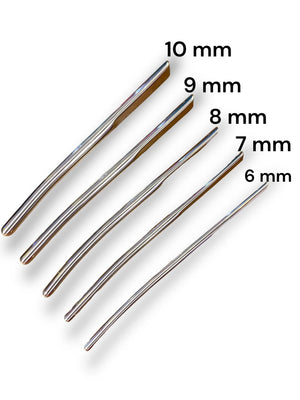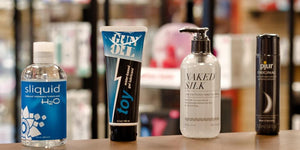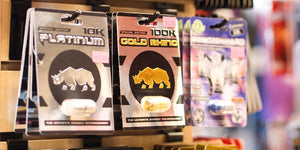What exactly are phthalates, and why should I be afraid of them?
Perhaps the most significant controversy surrounding sex toys today is about the use of phthalates in the production of "jelly rubber" toys. Phthalates are plasticizing agents used to soften PVC, and they are commonly used in the manufacture of many common products, including adhesives, shower curtains, and caulks. U.S. and European Union banned their use in children’s toys and a study by Greenpeace that found they are commonly present in high concentrations in many sex toys. Adult toy manufacturers have argued that while some phthalates have been shown to be harmful to rats, there has not been a single study that has shown phthalates in sex toys to be dangerous to humans. A study did suggest that boy infants born to women who had very high levels of phthalate exposure during pregnancy were more likely to have a shortened anogenital distance, which may reflect endocrine disruption. They also may point out that since American products are rife with phthalates, and since most Americans show some level of exposure to phthalates--primarily through diet--sex toys are unlikely to do any harm.
All the same, consumer advocates argue, “Why take the risk?” and we’d be inclined to agree. After all, many chemicals have proven to be harmful only after decades of use allowed the collection of enough data to determine the true danger posed. It is unlikely that the use of a sex toy alone will cause you any great harm. However, if you are concerned about your overall exposure to possibly-harmful chemicals, any reduction is worthwhile.
The good news is, whether or not they agree with the assessment of risk, manufacturers are responding to concern in the marketplace by introducing more toys that are phthalate-free (look for it in our item descriptions). Over the next several months, you will see more and more toys in our catalog that bear this designation, as we are constantly looking for phthalate-free versions of the toys we carry. 100% Silicone toys, Hard Plastic toys, Glass toys, and Metal toys are always phthalate-free.
Also, if you prefer a toy in our catalog that is not phthalate-free (some great toy designs are still only available in rubbers that include some phthalates), remember that covering your toy with a condom during use will provide a barrier that will protect you from harmful chemicals. This will add somewhat to the overall cost of your toy, but it will ensure your greatest, safest enjoyment, and it will also simplify cleaning and extend the life of many toys.
This article was updated to reflect the U.S. law passed in 2008 and enacted February 2009 that bans the use of phthalates in children's toys.
- Tags: Sex Toys Sexual Health
- Staff





